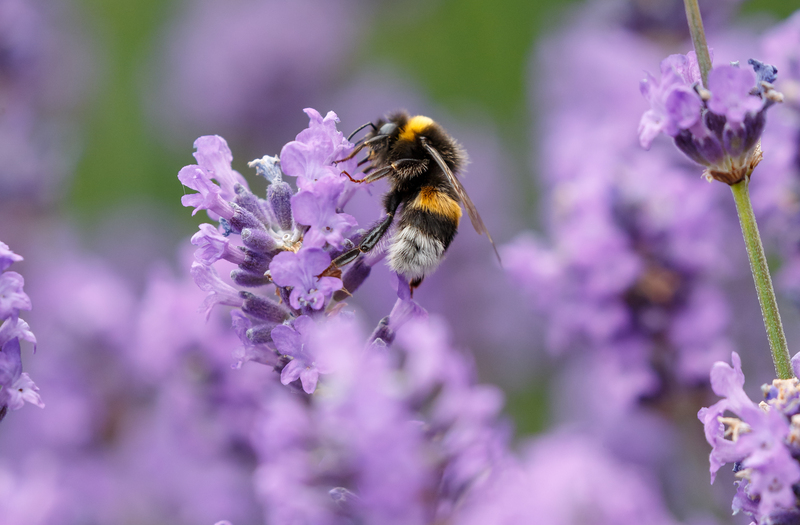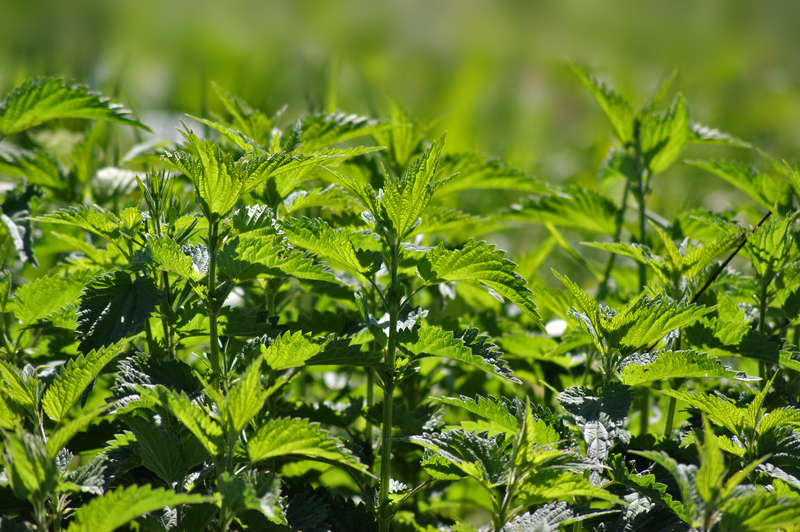Unlock the Secrets to Healthy Orchids
Posted on 24/05/2025
Unlock the Secrets to Healthy Orchids: The Ultimate Guide
Orchids are charismatic, exotic, and mesmerizing -- but mastering their care can sometimes feel like a well-guarded mystery. If you've ever wondered how to keep your orchids healthy and thriving, you're not alone! Unlocking the secrets to vibrant orchids isn't just for professional plant enthusiasts. With the right knowledge, anyone can transform their living space into a blooming orchid haven. In this comprehensive article, we'll unveil the best practices and expert tips to help you nurture healthy orchid plants, ensuring longevity, resilience, and magnificent blooms.

Understanding Orchid Basics: Varieties and Growth Patterns
Why Are Orchids So Special?
- Global Diversity: With over 25,000 naturally occurring species and countless hybrids, orchids are among the largest plant families on Earth.
- Unique Blooms: Their intricate flowers come in various colors, shapes, and fragrances, making each variety a collector's delight.
- Longevity: Given the right care, healthy orchids can thrive and bloom for decades!
Popular Types of Orchids for Beginners
- Phalaenopsis (Moth Orchid): Hardy and forgiving, ideal for beginners.
- Cattleya: Known for their vibrant scents and dazzling colors.
- Dendrobium: Versatile and often seen in floral arrangements.
- Oncidium: "Dancing Lady" orchids, require bright light and moderate watering.
Identifying your orchid variety is the first step to unlocking the secrets of their health.
Essential Conditions: Recreating Nature for Healthy Orchids
The Role of Light in Orchid Health
Orchids thrive in bright indirect light. Too much direct sun can scorch their leaves, while too little will stunt growth and prevent blooming.
- Phalaenopsis: Prefer indirect morning sun or filtered light. A north or east-facing window is ideal.
- Cattleya & Dendrobium: Need brighter light but still benefit from some protection during the hottest part of the day.
Check leaf color as your guide: healthy orchids should have light to medium green leaves. Dark green may indicate insufficient light, while yellowish overtones suggest too much sun.
Watering Wisdom: Avoiding the #1 Orchid Killer
Overwatering is the most common mistake in orchid care. Orchids are adapted to air and occasional rainfall, not soggy roots. Here's how to get watering right:
- Water when the top inch of the potting material feels dry.
- Typically, this means watering every 7-10 days, but frequency varies depending on humidity and temperature.
- Use tepid, distilled, or rainwater for best results. Avoid softened water.
- Water early in the day to allow leaves to dry before nightfall, preventing rot.
If you're unsure, remember: it's better to under-water than over-water!
Humidity: Mimicking the Rainforest
Healthy orchids love humidity levels between 40-70%. Here are easy ways to increase humidity for your orchid plants:
- Place orchids on a humidity tray (a shallow tray filled with water and pebbles).
- Group plants together to create a microclimate.
- Mist the air around the plants, but avoid heavy misting on leaves and blooms.
- Use a room humidifier in dry climates.
Lack of humidity can cause shriveled pseudobulbs and limp leaves.
Orchid Potting Mix: Getting the Substrate Right
Orchids do not grow in soil. They need specialized potting media such as:
- Bark chips
- Sphagnum moss
- Perlite
- Coconut husk
The mix must allow for excellent drainage and airflow to keep orchid roots happy. Repot every 1-2 years to prevent breakdown of the mix.
Temperature: Balancing Warmth and Coolness
Healthy orchid care requires stable temperatures tailored to your orchid species:
- Phalaenopsis and most common types enjoy 65-75?F (18-24?C) by day and not dipping below 55?F (12?C) at night.
- Cattleya and Dendrobium may prefer a more distinct day-night temperature variation to encourage blooming.
Drafts and sudden temperature changes can cause bud drop or leaf loss, so keep orchids away from cold windows and heat sources.
Feeding for Flourishing: Orchid Fertilizer Tips
Orchids need nutrients, but less is more! Use a balanced "20-20-20" fertilizer at quarter to half strength every 2-4 weeks during the growing season.
- Flush the pot monthly with fresh water to prevent salt build-up.
- Switch to a "bloom booster" fertilizer when flower spikes are forming.
- Avoid fertilizing when the plant is dormant.
Orchid Health Challenges: Troubleshooting Common Problems
Pests and Diseases: Keeping Orchids in Top Shape
Common orchid pests include:
- Aphids
- Mealybugs
- Spider mites
- Scale insects
Inspect the undersides of leaves and the base of flower spikes regularly. At the first sign, remove pests with isopropyl alcohol on a cotton swab or insecticidal soap. For diseases (like root or crown rot), improve air circulation, repot in fresh mix, and cut away infected areas.
Signs of Unhealthy Orchids & How to Rescue Them
- Wrinkled leaves: Usually under-watering or root rot. Check roots and adjust watering.
- Yellowing leaves: Could mean overwatering, old age, or excess sun.
- Leaf spotting or mushiness: Indicates fungal or bacterial infection; remove affected tissue and treat with a fungicide.
- No flowers: May suggest insufficient light or improper temperature swings.
Keeping an eye on your orchid's appearance is the fastest way to catch issues early and ensure plant vitality.
Propagation Secrets: Multiply Your Orchid Collection
Dividing Orchids
Clumping orchids like Cattleyas and Dendrobiums can be divided during repotting:
- Wait until new growth appears, then gently separate rhizomes into sections with 3-4 pseudobulbs each.
- Repot divisions in moistened mix and keep in a warm, humid environment until new growth appears.
Growing Orchids from Keikis
"Keiki" is the Hawaiian word for "baby" -- some orchids, like Phalaenopsis, naturally produce baby plants on flower spikes:
- When roots reach 2-3 inches, carefully detach the keiki and pot it like a mature orchid.
This is a rewarding, organic way to expand your healthy orchid collection!
Blooming Success: Encouraging Your Orchids to Flower Again
The Key to Re-Blooming Orchids
Most orchids need a cool, dry rest period after blooming. For example, Phalaenopsis orchids may benefit from cooler nights for a few weeks to urge reblooming. Dendrobiums rest during winter with less water and no fertilizer.
- Reduce watering and fertilizer after blooms fade.
- Move to a spot with brighter light (but no direct sun).
- Trim old flower spikes just above a node to encourage new spikes.
Patience is vital; some orchids may take months to bloom again. Mastering the cycle is another secret to keeping healthy orchid plants that flower year after year.
Advanced Tips: Secrets from Orchid Pros
- Repotting: Always use clean tools. Never repot a blooming orchid -- wait until flowers are done.
- Air Movement: Orchids love fresh air circulation but never place them in the path of cold drafts.
- Sterilize: Dip pruning shears in alcohol between plants to prevent disease spread.
- Label Your Orchids: Keep track of types and care notes for better customization.
- Celebrate small successes! Even managing one healthy orchid is a major win and a sign you're mastering the secrets of orchid care.

Frequently Asked Questions About Healthy Orchids
How often should I water my orchid?
Most orchids do best when watered once a week; always check the potting mix. Water only when it feels dry a finger's depth below the surface.
What is the best light for healthy orchids indoors?
Bright, indirect sunlight is ideal. East or north-facing windows are perfect. Avoid hot, intense midday sun that can scorch leaves.
Can I use regular potting soil for orchids?
No, orchids need a chunky, fast-draining mix like bark, sphagnum moss, or a commercial orchid blend to prevent root rot.
Should I mist my orchid leaves?
Mist the air around orchids rather than spraying the leaves directly, to prevent fungal issues while still boosting humidity.
Conclusion: Your Path to Robust, Thriving Orchids
Unlocking the secrets to healthy orchids is a journey filled with learning, patience, and rewarding beauty. By understanding orchid varieties, providing the proper environment, and mastering watering, light, and feeding routines, you can enjoy luxuriant blooms and vibrant plants for years to come.
Remember, each orchid is unique. Observe, adjust, and cherish the process -- before you know it, you'll be surrounded by thriving, happy orchid companions. For more orchid care tips, troubleshooting help, and advanced techniques, check back often. Your adventure into the world of healthy orchid care is just beginning!

